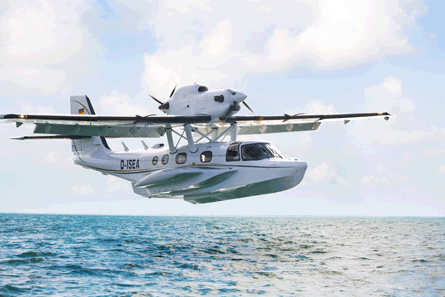Dornier Seaplane is planning to break ground next year on a final assembly facility in Montreal for its Seastar twin-engined amphibious turboprop.
After several months of deliberation, the Punta Gorda, Florida-based start-up plumped for the suburb of Saint-Jean-sur-Richelieu as the manufacturing site for its all-composite, Pratt & Whitney Canada PT6A-135-powered aircraft.
The decision was based on several factors, Dornier says, including "the strong federal, provincial and local government support for aerospace; the local aviation supply chain, including P&WC; the skilled aerospace labour pool within the area; and its proximity to Lake Champlain with its uncongested airspace for demonstration and production flight-test activities".
Dornier Seaplane chief executive Joe Walker says: "Now that we have achieved this milestone, we are anxious to get started. We hope to finish building the assembly facility in the third quarter of next year and deliver the first aircraft in 2012. The supplier selection process should also be completed within 12 months."
 |
|---|
© Dornier |
The 10-seat Seastar was unveiled in the early 1980s and had secured European and US certification before production stopped in 1991 because of a lack of funding.
Dornier Seaplane has received 25 letters of intent for the $6 million aircraft, which it is in the process of converting into firm orders. "Given that this is the worst economic downturn that the industry has experienced we are encouraged by the market response to the aircraft," Walker says.
Dornier is targeting four sectors - commercial operators that would use the aircraft for island hopping, oil companies for offshore crew transport, governments for special mission operations and high-net-worth individuals.
Production rates will climb gradually from one aircraft in 2012, six in 2013 and 12 in 2014. Full production could reach up to 50 Seastars a year, depending on demand for the niche product, Walker says. The first 10 aircraft will be delivered in the Seastar's original round dial configuration and subsequent aircraft will be upgraded with a glass cockpit, known icing, autopilot and air conditioning - which can be retrofitted at a later date.
The company is set to begin recruiting for senior production management positions and plans to hire 250 people for final assembly jobs and 200 for fabrication work over the next five years.
Source: Flight International



















